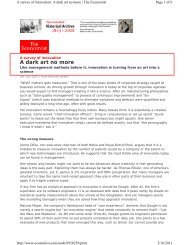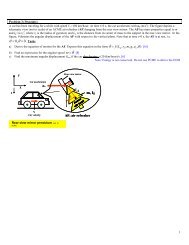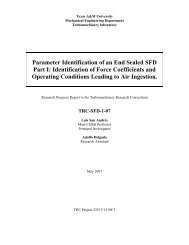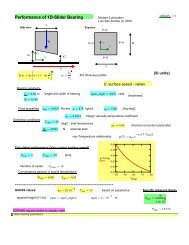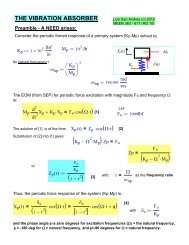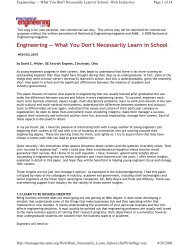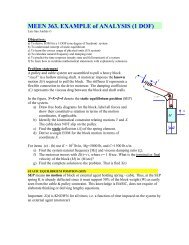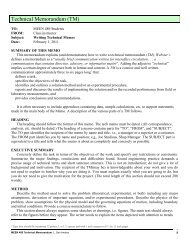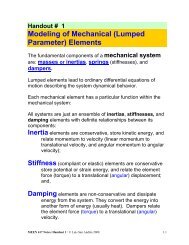Solving Problems in Dynamics and Vibrations Using MATLAB ...
Solving Problems in Dynamics and Vibrations Using MATLAB ...
Solving Problems in Dynamics and Vibrations Using MATLAB ...
Create successful ePaper yourself
Turn your PDF publications into a flip-book with our unique Google optimized e-Paper software.
12<br />
For our convenience, put<br />
x = y (1);<br />
.<br />
x = v = y(2);<br />
Equations (2) <strong>and</strong> (3) reduce to<br />
.<br />
y (1) = y (2); (4)<br />
.<br />
y (2) = [(-c/m)*y (2) – (k/m)*y (1)]; (5)<br />
To calculate the value of ‘c’, compare equation (1) with the follow<strong>in</strong>g generalized equation.<br />
..<br />
.<br />
2<br />
x+ 2ξω<br />
n<br />
x+<br />
ω<br />
n<br />
= 0<br />
Equat<strong>in</strong>g the coefficients of the similar terms we have<br />
c<br />
m<br />
= 2ξω<br />
(6)<br />
n<br />
2 k<br />
ω<br />
n<br />
=<br />
(7)<br />
m<br />
Us<strong>in</strong>g the values of ‘m’ <strong>and</strong> ‘k’, calculate the different values of ‘c’ correspond<strong>in</strong>g to each value<br />
of ξ. Once the values of ‘c’ are known, equations (4) <strong>and</strong> (5) can be solved us<strong>in</strong>g <strong>MATLAB</strong>.<br />
The problem should be solved for five cycles. In order to f<strong>in</strong>d the time <strong>in</strong>terval, we first need to<br />
determ<strong>in</strong>e the damped period of the system.<br />
Natural frequency ω n = ( k / m)<br />
= 10 rad/sec.<br />
For ξ = 0.1<br />
Damped natural frequency ω d = ω n 1− ξ 2<br />
= 9.95 rad/sec.<br />
Damped time period T d = 2π/ω d = 0.63 sec.<br />
Therefore for five time cycles the <strong>in</strong>terval should be 5 times the damped time period, i.e., 3.16<br />
sec.





